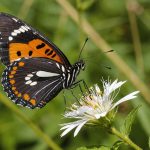Overview of Butterfly Watching in the UK
Butterfly watching has emerged as a delightful pursuit for nature enthusiasts. It offers a serene respite while fostering a deeper appreciation for biodiversity within the UK’s rich ecosystems. The nation boasts an impressive array of butterfly species, with over 59 resident and migrant types fluttering through the countryside. Recognising such diversity, it becomes clear why UK nature tourism places a special emphasis on these vibrant creatures.
An understanding of the various butterfly species enriches the experience. While some, like the graceful Common Blue or the majestic Peacock, are frequently spotted, rarities like the Marsh Fritillary add excitement and challenge to any outing. Each species brings unique beauty and behaviour, enticing watchers to learn and document their sightings diligently.
Topic to read : Spring equinox stargazing: discover the best uk destinations for celestial wonders
Incorporating butterfly conservation into outdoor activities is essential for their continued survival. Enthusiasts and tourists alike can contribute to conservation efforts by supporting habitats and participating in citizen science projects. This not only ensures the protection of these species but also enriches the outdoor experience. By fostering eco-friendly practices and conservation awareness, butterfly watching in the UK becomes more than a hobby—it becomes a pivotal part of preserving the country’s remarkable biodiversity.
Top Butterfly Watching Locations in the UK
Exploring the best butterfly locations in the UK offers enthusiasts the opportunity to immerse themselves in the region’s vibrant ecosystems. These wildlife hotspots provide habitats for myriad butterfly species, enhancing the country’s allure for nature lovers.
Also to discover : Unveil the best uk spots for memorable guided tours of ancient burial sites
The New Forest National Park
Known for its remarkable biodiversity, The New Forest National Park hosts a plethora of butterfly species. Visitors can spot the Silver-washed Fritillary among the shaded woodland paths or the Purple Emperor in the treetops during July and August. For optimal sightings, mornings offer the most activity as butterflies bask in early sun, particularly between June and August.
Wicken Fen Nature Reserve
This nature reserve is a shining example of prime fen habitat, pivotal to supporting diverse butterfly population. Observe rare species like the Fenland Skipper flitting amongst sedge and reeds. With well-maintained pathways, Wicken Fen is easily navigable, making it accessible for all visitors. Facilities include a visitor centre and guided walks to enrich the experience.
Yorkshire Dales National Park
The expansive landscapes of the Yorkshire Dales invite butterfly watchers to its picturesque trails. Meadows and limestone pavements attract species such as the Northern Brown Argus. Key trails include Wharfedale and Swaledale, known for guided tours that enhance your butterfly watching adventure.
Types of Butterflies to Observe
The UK is a treasure trove for butterfly enthusiasts with its remarkable butterfly species diversity. Whether you are a seasoned observer or an amateur discovering this exquisite hobby, understanding some common and rare butterflies enhances the experience immensely.
Among the common butterflies is the ubiquitous Common Blue, easily identified by its brilliant azure wings. In contrast, the Red Admiral’s striking patterns make it stand out in any setting. Identifying these species involves observing wing patterns, colours, and flight behaviours.
For those seeking a challenge, rare butterflies like the Heath Fritillary can be elusive. Known as the “Woodman’s Follower” due to its affinity for coppiced woodland, this butterfly demands patience and sharp observation skills.
Butterfly watchers should also be aware of seasonal variations. For instance, the Painted Lady, a migratory species, arrives in the UK as part of a long journey from Africa, mainly appearing between May and October. Recognising these patterns allows watchers to correctly time their outings for optimal sightings. Documenting your observations can also aid in tracking butterfly lifecycles, contributing valuable data to citizen science projects.
Essential Tips for a Successful Butterfly Watching Adventure
Embarking on a butterfly watching adventure requires some preparation and awareness to truly enjoy the experience. First and foremost, practising respectful observation is crucial. Avoid excessive movement and noise, as butterflies are easily disturbed. Remaining still and observing patiently can lead to more memorable encounters with these delicate insects.
To capture the perfect butterfly photograph, timing and patience are key. Early mornings or late afternoons offer softer lighting, which is ideal for highlighting the vibrant colours of butterfly wings. Using a camera with a macro lens can bring intricate wing patterns to life. It’s beneficial to practice gentle approaches to avoid casting shadows that might startle your subject.
Contributing to butterfly conservation efforts is a vital part of the hobby. Engaging in citizen science initiatives allows your observations to aid in monitoring butterfly populations. Additionally, adopting conservation practices such as avoiding habitat disturbance and educating others about the importance of maintaining natural environments helps support butterfly survival. This ensures future generations can enjoy these beautiful creatures as part of the UK’s rich biodiversity. By following these butterfly watching tips, watchers can cherish and sustain their presence within the environment responsibly.
Accessibility and Facilities at Butterfly Watching Locations
Exploring butterfly watching places is a delightful family-friendly activity, with many butterfly watching locations offering excellent accessibility and facilities. For those travelling by car, many locations are conveniently situated with nearby parking options. Some sites are also accessible via public transport, ensuring that everyone can enjoy UK’s vibrant nature tours without hassle.
Facilities are often plentiful, catering to both solo observers and larger groups. Expect visitor centres with informational displays and maps to enhance your experience. These centres often provide refreshments and essential services, ensuring a comfortable visit. Moreover, most locations are family-friendly, featuring child-friendly trails and picnic spots that invite families to partake in the beauty of butterfly watching together.
Guided tours often enrich the experience, providing insights into local nature reserves and their butterfly species. Local guides offer invaluable knowledge of the best hiking trails and hotspots, often tailoring their tours to suit various levels of interest and expertise in butterfly watching. For those seeking deeper engagement, many spots have affiliations with conservation organisations, providing opportunities for visitors to support butterfly conservation while enjoying these natural gems.
Conservation and Responsible Butterfly Watching
Engaging in butterfly watching not only rewards enthusiasts with beautiful encounters but also plays a vital role in butterfly conservation. Participating in local conservation efforts is crucial for maintaining these fragile ecosystems. Supporting organisations such as Butterfly Conservation and contributing to data collection projects ensures that these vibrant creatures thrive for future generations.
Adopting eco-friendly practices enhances your butterfly watching experience while protecting their natural habitats. Simple actions, such as staying on marked trails to prevent habitat disturbance, using biodegradable products, and refraining from littering, significantly impact ecosystem health. These practices preserve the environment for both butterflies and other wildlife.
Sustainable tourism revolves around conscious choices that benefit ecosystems. Opt for sustainable accommodations and facilities that implement energy-saving measures and support local communities. Seeking out local guides familiar with the area’s unique biodiversity can enrich your understanding of these magnificent creatures and their surroundings.
Finally, several organisations work tirelessly to support butterfly habitats. Initiatives provide research, advocacy, and practical conservation solutions to protect and expand critical environments. By participating in these efforts, you help maintain biodiversity and ensure that butterfly watching remains a cherished activity for nature lovers across the UK.











